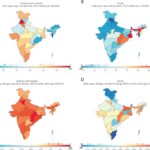Shopping for auto insurance can feel overwhelming. With so many companies and policy options available, how do you know you’re getting the best coverage at the right price? Understanding how insurance companies set their rates and utilizing comparison tools are key steps in making informed decisions. This guide will help you navigate the process of comparing auto insurance policies and find the right fit for your needs.
Understanding Auto Insurance Rates and Premiums
Insurance companies don’t just pull numbers out of thin air. The premiums you pay are based on carefully calculated rates. These rates are the foundation upon which your final premium is built, and they are typically filed with and approved by regulatory bodies to ensure fairness and transparency. Think of these rates as a base price that is then adjusted based on various factors related to you and your vehicle.
These adjustments come in the form of discounts and surcharges. For example, you might receive a discount for bundling your auto insurance with your home insurance, or for having a safe driving record. Conversely, you might face a surcharge if you drive a high-performance sports car or have a history of traffic violations. The final premium you are quoted is the result of applying these discounts and surcharges to the base rate, reflecting the specific risk you represent to the insurance company.
How to Effectively Compare Auto Insurance Policies
Comparing auto insurance policies is crucial, but it’s important to understand the tools and information available to you. Many resources offer “premium surveys” or comparison tools that show average premiums from different insurance companies. These surveys can be incredibly useful for getting a general idea of how different insurers price their policies. They act as benchmarks, showing you the relative cost differences between companies.
However, it’s vital to recognize the limitations of these surveys. They are not personalized quotes. The premium you ultimately pay might be different from the figures you see in a survey. This is because surveys often use hypothetical scenarios and may not factor in all the unique details of your individual profile, such as specific discounts or surcharges that apply to you.
What to Keep in Mind When Comparing
When you are in the process of comparing auto insurance policies, remember these key points:
- Surveys are for comparison, not exact quotes: Use them to understand general price differences between insurers, but always get personalized quotes.
- Individual circumstances matter: Your driving history, vehicle type, location, and coverage needs will all influence your final premium.
- Discounts and surcharges are key: Inquire about all potential discounts you might qualify for and understand any surcharges that may be applied.
- Coverage is as important as price: Don’t just focus on the cheapest premium. Ensure the policy provides adequate coverage for your needs.
- Shop around and compare: Get quotes from multiple insurance companies to find the best combination of price and coverage.
By understanding the factors that influence auto insurance premiums and using comparison tools wisely, you can confidently shop for the right policy and ensure you are adequately protected on the road. Remember to always get personalized quotes to see the actual premium you would pay and to choose a policy that meets both your budget and your coverage requirements.
